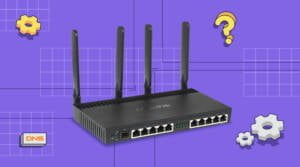Understanding the role of ports in network communication
Ports are special numbers that are assigned to various services and applications within a network. They allow two devices to establish a connection and exchange information. Each port has its own number, which can be from 0 to 65535. Some of them are reserved for system needs, for example, port 80 is used for HTTP servers, and port 25 is for mail servers. Understanding the role of ports in network communication is very important in order to properly configure network devices and applications. If ports are not configured correctly, there may be a problem connecting to the network or exchanging information. It is also important to remember that some ports may be blocked, for example, for security reasons. If you encounter a problem opening a port, you need to check the settings of the firewall and other security tools. In the next article, we will consider a detailed guide on opening ports for beginners.
Why do we need ports and how do they work?
Ports are an important part of a network connection system. They allow data to be exchanged between computers on a network.
Each port has a unique number that determines what type of information will be transmitted through it. For example, ports 80 and 443 are used to transmit data via HTTP and HTTPS protocols, respectively, and ports 25 and 587 are used for email.
To establish a connection between two devices, you need to open the corresponding ports on both devices and configure the rules for data exchange. This can be quite a challenging task, especially for beginners.
In the next article, we'll take a closer look at how to open a port on your computer and set up communication rules to ensure your network is secure and data transfers efficiently.
Checking port opening and troubleshooting
Opening a port can be a difficult task for novice users, but with this guide you can check if the port is open and resolve any problems that may arise.
The first step is to check that the port is open. To do this, you need to enter the command 'telnet [IP address] [port number]' in the command line. If the port is open, you will see a black screen. If the port is closed or blocked, you will receive an error message.
If the port is closed, then you need to open it. To do this, you need to go to the settings of your router and add the appropriate rule. This can be done in the 'Filtering Rules' or 'Port Forwarding' sections. To open ports, you need to specify the port number, protocol (TCP or UDP) and IP address of the device to which you want to redirect traffic.
If problems remain after opening the port, then you need to check for a firewall or anti-virus software that can block traffic to this port. In this case, you need to add an exception for the required port in the settings of the corresponding program.
In conclusion, opening a port may seem like a difficult task for beginners, but with the help of this guide, you can check if the port is open and resolve possible problems. Opening a port can be an important step when setting up a network. If the port is closed, this may cause problems when establishing connections with other computers. To make sure that the port is open, you can use special tools such as Port Scanner.
If you find that the port is closed, there are several ways to open it. The easiest way is to use a router and set up port forwarding rules. This will allow access to the port from the external network.
If you encounter problems opening a port, then the first step should be to check your router settings. If this does not help, then you can use specialized programs that allow you to monitor traffic and find the cause of the problem.
Opening a port can be a challenging task, but with the right tools and settings it can be done without much hassle. If you don’t know how to open a port, then seek help from professionals or use a detailed guide on setting up a network.
Protection against security threats
When opening a port on a computer, there may be security risks. To protect yourself from hacker attacks, you need to take several precautions.
First, it is important to install antivirus software and update it regularly. This will help detect and block malware that could be used to attack your computer through an open port.
Second, you should set up a firewall to block unwanted traffic to your computer. The firewall can be configured to allow access only to certain IP addresses or ports.
You should also use strong passwords to access your computer and change them regularly. This will help prevent unauthorized access to your system.
Finally, it is recommended to use a virtual private network (VPN) to encrypt your Internet connection and provide an additional layer of security.
By following these precautions, you can open a port on your computer without the risk of becoming a victim of hacker attacks.
How to secure your network when opening a port
Opening a port on your network can allow remote devices to access your computers. This can be dangerous if you don't secure your network correctly. Here are some tips to help you secure your network when opening a port:
1. Use a strong password to access your network and devices. Never use simple passwords such as '123456' or 'password'. It's best to use a long password that contains letters, numbers, and special characters.
2. Install a firewall on your router. A firewall can block incoming connections and protect your network from attacks.
3. Use only secure protocols. If you open a port for remote access, make sure you only use secure protocols such as SSH or HTTPS.
4. Update your software regularly. Software updates may contain fixes for vulnerabilities that could be used by attackers to attack your network.
5. Limit access to your network. Make sure only devices you trust can access your network.
By following these tips, you can secure your network when opening a port and protect yourself from attacks.
Read further:






